scannable fake IDs
Introduction: Understanding Scannable Fake IDs in a High-Tech World
As technology continues to advance, so does the sophistication of counterfeit identification. Among these, scannable fake IDs stand out as one of the most rapidly growing trends, offering unparalleled realism and usability compared to traditional fake IDs. This type of ID is meticulously designed to replicate the security features of real government-issued identification cards, including magnetic stripes, QR codes, and barcodes that pass various scanning tests.
The demand for such IDs is increasing, particularly among certain demographic groups. But what makes these fake IDs so attractive? How are they created, and what risks do they entail? In this comprehensive article, we will explore every aspect of scannable fake IDs, including their features, target market, legal landscape, and much more.
Chapter 1: Evolution of Fake IDs: From Traditional to Scannable
The History of Fake IDs
Fake IDs have been around for decades, serving as tools for underage individuals to bypass age restrictions on alcohol, tobacco, and other controlled substances. Early versions of fake IDs were simple, consisting of basic laminated cards with poor-quality prints, lacking the advanced security features seen in modern identification cards.
However, the introduction of digital security measures by governments around the world has forced counterfeiters to evolve. Today’s fake IDs use high-resolution printers, holographic overlays, and sophisticated materials to closely mimic real IDs.
The Rise of Scannable Fake IDs
The key difference between old-fashioned fake IDs and the new generation of scannable fake IDs is the inclusion of embedded data that can pass through ID scanners. In the past, even realistic-looking fake IDs were useless if the barcodes or magnetic strips didn’t contain legitimate data. With scannable fake IDs, the data matches what the scanners expect to see, making them far more difficult to detect.
Scannable fake IDs have evolved to imitate real IDs in multiple ways:
- Magnetic Stripe Encoding: Scannable fake IDs include magnetic stripes encoded with data that matches the user's personal details, making them functional when swiped at places like bars and clubs.
- Barcode Duplication: Barcodes on scannable fake IDs contain scannable data that mirrors real government-issued IDs, making them passable through most retail systems.
- QR Codes: Many high-tech fake IDs also include QR codes that can link to mock databases or redirect to websites that reinforce the authenticity of the fake card.
This leap in technology has made it significantly harder for businesses to distinguish between real and fake IDs, contributing to their growing demand.
Chapter 2: Features of Scannable Fake IDs
To truly understand the appeal of scannable fake IDs, we must examine the specific features that set them apart from other counterfeit IDs. High-quality scannable fake IDs replicate nearly every aspect of a real ID, from the surface appearance to the embedded data:
1. Authenticity in Appearance
- Holographic Overlays: These IDs often feature holographic seals and overlays that reflect light in the same way as a legitimate ID.
- Raised Text and Microprinting: The tactile quality of raised text and microscopic details can be accurately reproduced, giving the ID a convincing feel when handled.
- UV Ink: Many scannable fake IDs include ultraviolet ink that is only visible under blacklight, a key security feature of modern identification cards.
2. Functionality in Scanners
- Barcodes: The barcodes on these IDs can be scanned by retail POS systems, liquor stores, and other establishments with standard barcode scanners.
- Magnetic Strips: Embedded magnetic strips that can pass swipe tests at venues like clubs and casinos are a vital feature of these IDs.
- QR Codes and RFID Chips: The highest-quality scannable fake IDs even feature QR codes or RFID chips that can be read by scanning devices used by law enforcement or government agencies.
3. Customization Options
- State and Country Replicas: Buyers can choose which state or country their fake ID should replicate, often choosing from a variety of states that have more lenient designs or are easier to forge.
- Personal Details: Information like name, date of birth, and address can be customized to the buyer’s specifications.
- Photo Customization: Modern fake ID providers offer options for uploading a personalized photo, which is then manipulated using advanced photo editing tools to blend seamlessly with the ID card's layout.
Chapter 3: Market Analysis: Who Buys Scannable Fake IDs?
1. Primary Demographic: College Students
The largest market for scannable fake IDs is young adults, especially college students. Universities are breeding grounds for the use of fake identification, as students seek access to clubs, bars, and events that are age-restricted.
A study revealed that nearly 32% of college students in the United States have used a fake ID at least once, with that number rising among students aged 18 to 20.
2. Secondary Demographic: International Travelers
Another growing demographic for scannable fake IDs includes international travelers who may need identification to circumvent age restrictions or residency requirements in a foreign country. These travelers often seek high-quality fake IDs to ensure smooth passage through nightclubs, transportation hubs, and retail stores abroad.
3. Fraudulent Use in Employment and Identity Theft
While the majority of fake ID users are individuals seeking to bypass minor legal restrictions, there is a rising concern about their use in fraud and identity theft. High-quality scannable fake IDs can be used to gain employment under false pretenses, rent property, or commit financial fraud by misrepresenting one’s identity.
Chapter 4: Technology Behind Scannable Fake IDs
1. Advanced Printing Techniques
State-of-the-art printing methods play a critical role in the creation of scannable fake IDs. Many producers use industrial-grade printers that can replicate fine details like microtext, security holograms, and background patterns. These printers can also handle the high-definition image processing required to recreate faces and text.
2. Magnetic Stripe Encoding
Encoding the magnetic strip of a fake ID requires specialized software that can encode binary data. This involves copying the format of real IDs and ensuring that the encoded data matches the visual information on the card.
3. Barcode Generation and QR Codes
Barcodes and QR codes on scannable fake IDs must be generated using precise algorithms that match those used by legitimate identification-issuing agencies. These codes can often store a large amount of personal information, including the individual’s name, address, birthdate, and even signature.
4. Security Features
Some fake ID manufacturers have begun including enhanced security features, such as holographic seals, UV-reactive inks, and RFID chips. These additions make the fake ID almost indistinguishable from the real thing, and they play a key role in preventing the ID from being flagged during manual or machine-based checks.
Chapter 5: Legal Implications of Using Scannable Fake IDs
1. Legal Risks
Using or producing a scannable fake ID is illegal in most jurisdictions, with penalties ranging from fines to imprisonment. Possession of a fake ID can lead to charges such as fraud, identity theft, and forgery, with additional consequences if the ID is used to purchase alcohol or commit a crime.
2. State and Federal Laws
Each state or country has different laws governing the use and production of fake IDs. In the U.S., possessing a scannable fake ID can result in severe legal consequences, especially if it’s used in federally regulated areas such as airports or banks.
For international travelers, penalties vary by country, but many nations treat the use of fake identification as a serious offense with long-term legal repercussions.
Chapter 6: Target Audience and Marketing Strategies
1. Target Audience
The target audience for scannable fake IDs includes:
- College Students: Typically aged 18-21, these individuals are looking to bypass age restrictions for alcohol, nightlife, and events.
- Underage Drinkers: Teens below the legal drinking age often seek scannable fake IDs to gain access to alcohol.
- Travelers: Tourists who may be underage in a foreign country or want to bypass strict local regulations often turn to fake IDs.
2. Marketing Strategies
Manufacturers of scannable fake IDs often employ stealth marketing techniques, utilizing platforms like social media, encrypted messaging apps, and even dark web forums to reach their audience. Ads typically focus on the realistic appearance and functionality of the IDs, guaranteeing that they pass all types of security checks.
Chapter 7: Future Trends in the Fake ID Industry
1. Increasing Sophistication
As technology continues to evolve, so too will the complexity of scannable fake IDs. The inclusion of biometric data, such as fingerprints or facial recognition software, may become a trend in future iterations, adding another layer of authenticity.
2. Regulation and Countermeasures
Governments and businesses are also fighting back against the rise of fake IDs with more sophisticated detection methods. These include machine learning algorithms capable of identifying discrepancies between real and fake IDs, along with blockchain technology that may one day be used to securely verify the authenticity of an ID.
3. Blockchain-Verified IDs
Some experts believe that blockchain could eventually replace traditional methods of ID verification, with each legitimate ID stored on a decentralized ledger that can’t be duplicated or faked.
Conclusion: The Balance Between Innovation and Risk
Scannable fake IDs represent a unique intersection of technological advancement and legal risk. While they provide a solution for individuals seeking to bypass age restrictions and other legal hurdles, their use also poses significant ethical and legal challenges. With the market continuing to grow, both consumers and regulatory bodies must navigate the fine line between innovation and responsibility.
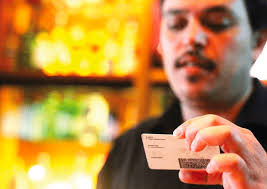 Sunshine State
Sunshine State
 Photo ID maker online
Photo ID maker online
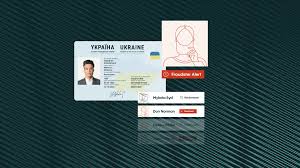 counterfeit documents
counterfeit documents
 fake IDs for sale
fake IDs for sale
 scannable fake IDs
scannable fake IDs
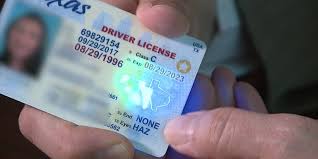 Fake Tennessee ID
Fake Tennessee ID
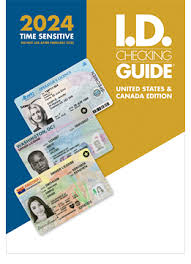 Underage Drinking
Underage Drinking
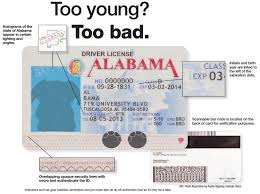 Tennessee laws on fake IDs
Tennessee laws on fake IDs
